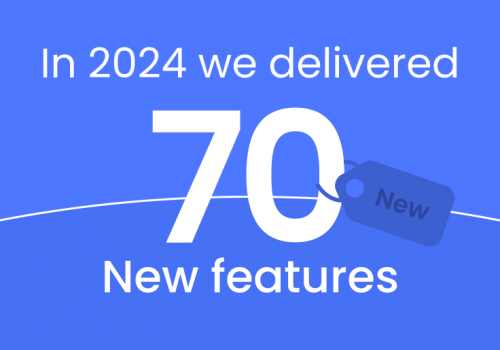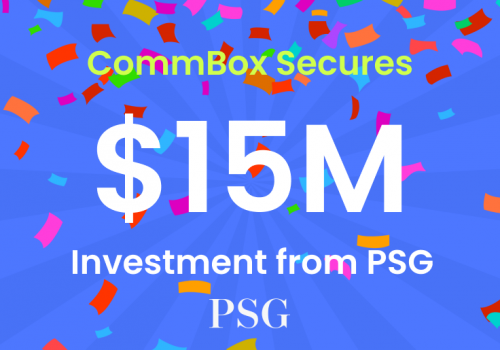Promote Diversity and Equality. In the last five years, equality and diversity have come under the spotlight more consciously and actively than ever before. The high-profile reporting on gender pay gaps, the MeToo movement, increased participation in LGBTQ Pride by companies, and the wider community, and more recently, the Black Lives Matter movement all play a major part in this. These events have encouraged forward-thinking companies to implement equality and diversity programs in the workplace.
Today we’re going to discuss how you can promote equality and diversity in the workplace and why your employees will love it.
The Benefits of Equality and Diversity
Why will your employees love increased equality and diversity? Because employees love things that will benefit them and their work environment, and this is exactly what these programs aim to achieve. Here are the top benefits of equality and diversity in the workplace.
Increased Innovation
Diversity of people leads to a diversity of thought. A study done by major professional services firm, Deloitte, found that when employees think their organization is committed to diversity, their ability to innovate increased by 83%.
People from different backgrounds and different life experiences have different ways of solving problems. Diversity of personality can also be a huge benefit to businesses.
Consider a situation where three leaders have to meet and make important business decisions about an ongoing project. Two members of the group are dominant and goal oriented. They look at the problem in a purely practical way that is detached from its emotional impact. The third member is more motivated by helping people and achieving a high level of employee happiness and cohesion. Both of these personality types are valid and viable in a business setting – one is not better than the other. For pragmatic goals to be met, you need employee buy-in. Projects require collaborative working, and this will be made much harder if employees think they haven’t been considered. When people think differently, they create differently, and more innovation happens.

New Skills
If you have a workforce full of people from a diverse set of backgrounds, then you have a diverse set of skills to draw on. Diversity doesn’t just impact the innovation of big ideas, but the day to day working of employees. A study by Cloverpop found that when decision-makers are diverse, higher quality decisions are made. The teams that were most diverse in terms of geography, age, and gender made better business decisions 87% of the time.
Entering New Markets
When businesses have people from different geographical, cultural, and social backgrounds, they have the knowledge necessary to enter new markets. When done successfully, this can lead to increased revenue and an excellent ROI.
The opposite outcome is entering a market based on incorrect assumptions. This can lead to ignorant or tone-deaf marketing that will at best fall flat and at worst incite backlash. In the US, only around 22% of people who work in advertising are non-white. In the US population as a whole, around 40% of the population is non-white. This lack of diversity in marketers might explain why some of these very tone-deaf campaigns happened:
- Pepsi (2017) – They ran an ad that was accused of trivializing the Black Lives Matter (BLM) protests. The ad showed BLM imagery and had reality star and entrepreneur Kendall Jenner promote peace by offering a police officer a can of Pepsi. Although the ad was evoking BLM imagery, the signs the protesters were holding were generic things like “join the conversation”.
- Nivea (2017) – They ran an ad for their deodorant called ‘Invisible’. The ad included the words “White is Purity” and “keep it clean, keep bright. Don’t let anything ruin it”. Needless to say, this received a huge backlash for racism.
- H&M (2018) – They ran an ad that featured a young black child wearing a hoodie that said, “Coolest monkey in the jungle”. They received widespread criticism for racism.
- Heineken (2017/2018) – Heineken Light ran a campaign in Europe with the slogan “sometimes lighter is better”. When the campaign later ran in the US, it was criticized for racism. The campaign didn’t attract the same criticism in Europe. Commenting on this, Ahmed Islam, CEO of Ten35, an agency dedicated to reaching multicultural audiences said: “We are in a hyper-sensitive racial environment right now,” he continued “There’s not much question that this could very easily be viewed as offensive”. In an article on how this happened, the reporter says that the marketing industry has struggled to gain racial diversity among top-ranking employees.
Brand Reputation
People want to buy from socially conscious companies, especially in the current climate. Companies are now increasingly engaged with transparency when it comes to reporting diversity and the gender pay gap. This helps hold the company accountable but also increased brand reputation for companies that are more equal and diverse.
How to Promote Equality and Diversity in The Workplace
Below is a guide on how to promote equality and diversity in the workplace. All of the points on this list can have a significant positive impact and lead to a great ROI. It’s important to read every point on the list and decide what makes the most sense for your company. Small and mid-sized companies may become overwhelming by trying to implement everything at once, but that’s not an excuse to do it at a later date. If you consider yourself a forward-thinking company, then now is the time to be proactive about equality and diversity in your workplace.
High Ranking Employees Need to Be Actively Involved
In the past, companies would have an equality and diversity team that was informally arranged by employees. These were typically lower-ranking employees who wanted to come together to promote diversity and inclusion in the business by celebrating alternative holidays and events. This is great, but it’s not enough.
Leadership must come from the top. Senior employees must be engaged. You can’t underestimate the importance of senior employee buy-in when it comes to how engaged the wider workforce is. One key reason for this that is often overlooked is that many employees are scared to be different or attract attention to themselves. There may be employees who want to support LGBTQ events but are worried about their reputation. When senior ranking employees engage, this fear is significantly reduced. Assign one or a few senior employees to be involved in activities like attending gay pride or giving out diversity awards.
Be Careful with Language and Address Poor Language
The language we use can have a dramatic impact on how included people feel. Ensure that all company documentation uses language that is sensitive and appropriate to a wide range of people. Furthermore, it’s important to confront employees who use inappropriate language. The issue here is that most people have a clear understanding of where the lines are drawn when it comes to clearly offensive language. However, more subtle forms of discrimination exist too.

Sometimes people use discriminatory language because they are unaware of its impact and there is no malicious intent behind the words. Sometimes, there is malicious intent. Either way, no one should be given a pass. Always assume no malicious intent, but always address the issue. For a simple example of what I’m talking out here, I once worked at an office where a senior member of staff called all men “sir” and all women “chick”. This might not be overtly offensive, but it’s clearly hierarchical. Men were given an honorific (a respectful title for an adult male) and women were referred to as baby chickens.
Find Your Unconscious Biases
Everyone has unconscious biases, whether it relates to age, gender, race, sexuality, or disability. You can take part in tests that reveal your unconscious biases. Once you know your results or the results of your workplace as a whole, you know what areas to focus more heavily on.
Ask Employees Anonymous Questions
We all have blind spots in our thinking. Without asking questions, you can’t expose these blind spots and make changes. We often mistakenly think that no discrimination is taking place around us because it doesn’t apply to us. The chairs in your office might be comfortable for you, but uncomfortable and even job hindering people with disabilities. Sometimes this issue presents in different ways. For example, let’s say you run a lunch meeting where employees can sit down in a meeting room with the CEO and have pizza. This meeting takes place on the second floor of a building with no elevator. This means that wheelchair users cannot attend the meeting. If they can’t attend the meeting, then they can’t network with the CEO and other employees, and they are at a clear disadvantage.
The goal here is to be conscious of the decisions you make and how they impact every employee. Don’t assume that everyone is like you.
Encourage the Celebration of Holidays and Be Mindful of Religious Events
This means that you don’t just focus on the dominant holiday in your country, for example, Christmas. If you have a diverse workforce, then you should encourage them to celebrate other holidays in the office too. For example, Hindus might want to celebrate Diwali.
It’s also a good idea to encourage employees to be conscious of religious practices. For example, to show support, you could encourage employees to only eat in the designated recreational areas during the month of Ramadan where Muslims will be fasting. This shows support, solidarity, and understanding for your Muslim colleagues.
Diversity and Inclusion expert Verna Myers once said, “diversity is being invited to the party, inclusion is being asked to dance”. Having a diverse workforce is one thing, but everyone needs to feel included.
Equality and Diversity Policies and Practices
This is about setting benchmarks for your workplace and continually monitoring your success against these goals. This means that you stay proactive in your efforts.
It’s also a good idea to invest in equality and diversity training so that all staff can be educated in your goals and a wider range of topics.
Eliminate of Discriminatory Policies
You can find several examples in the news of black men and women, but mostly women, being told that black hairstyles or even their natural hair are unprofessional. This is a form of racist discrimination that is still extremely common. In most western workplaces, the mold for what is professional was set by white people. This usually means straight hair, wavy or slightly curly hair. If you have policies for dress and hair, then consider whether these policies are inclusive of all people. People should not be asked to alter their natural hair or change a hairstyle that is culturally significant to them. The same is true for religious garments like headscarves, caps, or turbans.




















